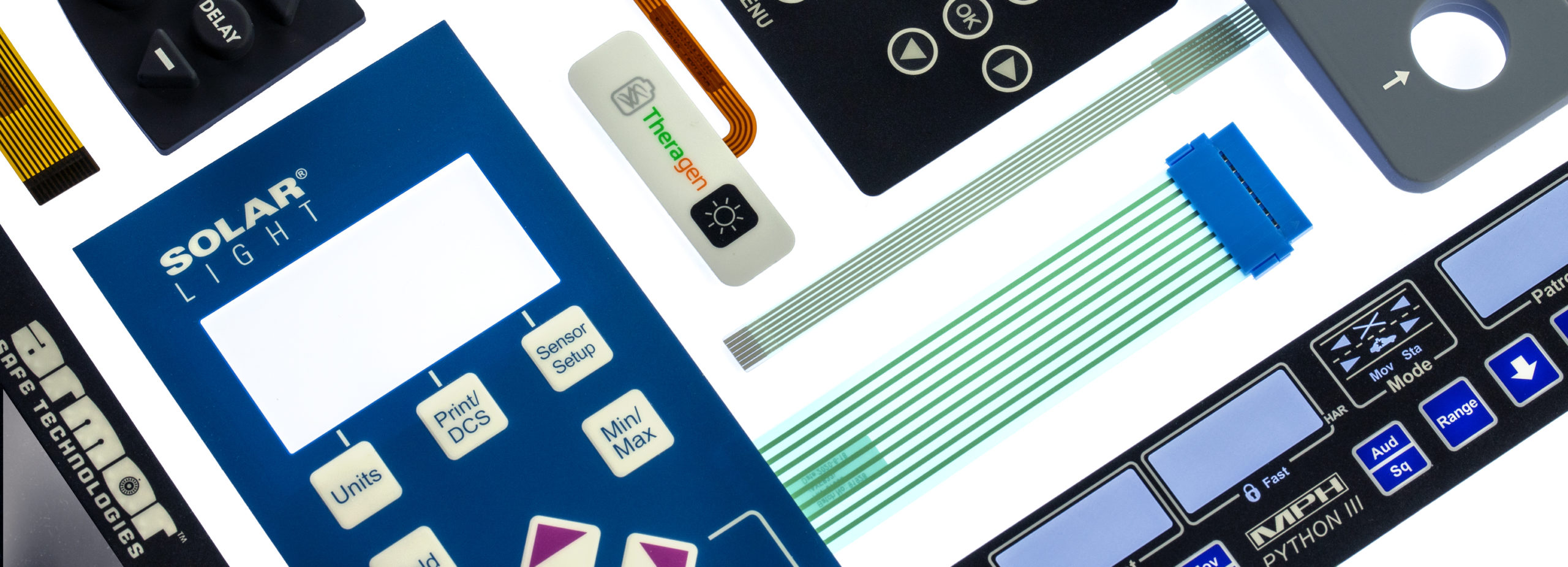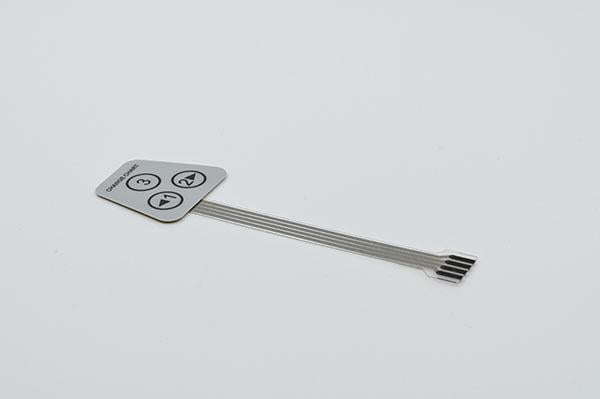Don’t ignore the value of working with a trustworthy membrane switch manufacturer for mock-ups.
Don’t ignore the value of working with a trustworthy membrane switch manufacturer for mock-ups.
Blog Article
Everything About Membrane Switch Over: Recognizing Its Design and Capability
When you think about the control interfaces in contemporary gadgets, membrane switches usually enter your mind. These components are greater than simply buttons; they blend style and capability effortlessly. Recognizing just how they function and what makes them reliable can alter your viewpoint on day-to-day electronic devices. There are subtleties to their design and performance that you could not be mindful of. Let's discover what collections membrane switches over aside from other control systems.
What Are Membrane Buttons?

Membrane layer buttons can also be customized relating to form, dimension, and graphics, allowing producers to create special interfaces customized to specific items. In general, membrane layer switches play a considerable function in improving customer experience throughout a broad variety of applications.
Exactly How Membrane Changes Work
When you press a trick on a membrane layer switch, it activates a straightforward yet effective mechanism. The leading layer, typically made from adaptable material, pushes down onto a conductive layer below it. This action bridges the space in between conductive traces, finishing an electrical circuit. As quickly as the circuit closes, it sends a signal to the device's controller, which interprets your input.
You'll observe that the tactile comments differs based upon the switch design, providing either a soft click or an extra obvious action. Once you release the key, the membrane returns to its original setting, resuming the circuit and stopping the signal. This procedure occurs virtually instantly, making sure a receptive customer experience.
Membrane layer buttons are preferred as a result of their sturdiness and resistance to dust and moisture, making them ideal for various applications, from home home appliances to clinical tools. Recognizing this procedure assists you value their extensive use.
Key Components of Membrane Switches
Understanding the essential components of membrane switches is fundamental for grasping their capability and style. At the core, you'll locate the graphic overlay, which offers the visual interface for individuals. Beneath that, there's a spacer layer that divides the circuit layers, making certain that they don't make get in touch with till pushed. The circuit layer is where the magic takes place; it contains conductive traces that finish the circuit when you press the switch. One more essential aspect is the adhesive backing, allowing the switch to adhere to surface areas securely. Finally, the safety layer guards against environmental variables and wear, prolonging the button's lifespan. Each component plays a substantial role in making certain trustworthy efficiency and user interaction. By understanding these parts, you'll gain understanding right into exactly how membrane switches operate and their relevance in various applications.
Products Used in Membrane Switch Over Design
The efficiency and resilience of membrane layer switches over greatly rely on the materials utilized in their layout. You commonly come across polyester and polycarbonate as primary substrates as a result of their exceptional stamina and flexibility. These products resist scrapes and chemicals, making them ideal for demanding settings.
The conductive layers typically make use of silver or carbon, picked for their integrity and conductivity. membrane switch manufacturer. Silver supplies premium performance, while carbon is an economical option. For the overlay, you may consider a matte or shiny finish, relying on your aesthetic demands and user experience
Adhesives play a necessary function as well; they bond layers firmly and assure durability. Make certain to select adhesives that stand up to environmental factors like temperature and humidity. Do not overlook the relevance of a good printing strategy for graphics, as it boosts both functionality and aesthetic charm. Picking the best materials will certainly guarantee your membrane layer switch stands the test of time.
Style Considerations for Membrane Layer Switches
While making membrane buttons, it's essential to take right into account different variables that affect their performance and customer experience. Start by focusing on the format and button dimension; make sure they're user-friendly and easy to navigate. Take into consideration the responsive responses you intend to give-- will individuals require a recognizable click or a softer touch? Furthermore, think of the materials you'll use, as they'll influence sturdiness and looks.
Do not forget the visuals design; clear labeling and shade comparison are substantial for visibility. Confirm your style suits ecological variables, like wetness or temperature level variations, which could impact performance. Keep in mind the significance of screening models with genuine users to collect responses and make essential modifications. This repetitive process helps you refine the layout, validating it fulfills both practical and aesthetic requirements effectively. By meticulously taking into consideration these aspects, you'll develop a membrane layer switch that enhances use and satisfaction.
Applications of Membrane Layer Switches
Membrane layer buttons are functional parts located in numerous applications, from industrial equipment to customer electronic devices. You'll see their impact in makers that need long lasting user interfaces and in continue reading this devices that take advantage of sleek layouts. Recognizing these applications helps you value the functionality and usefulness of membrane layer buttons in everyday innovation.
Industrial Devices Use
When you're looking to improve the performance of industrial equipment, membrane layer switches offer a trusted option that incorporates durability with user-friendly design. These buttons are excellent for severe environments, offering resistance to dust, dampness, and chemicals. Accept membrane layer buttons to streamline your operations and improve general performance.
Consumer Electronic Devices Assimilation
In the domain name of consumer electronic devices, membrane switches play a necessary function in enhancing user communication and device capability. You'll discover them in tools like microwaves, remotes, and gaming consoles, offering a seamless means to interact with technology. Their sleek style permits easy assimilation into various products, making controls user-friendly and easy to use. With their ability to incorporate graphics and backlighting, you can enjoy a modern aesthetic that enhances the gadget's overall look. Membrane buttons additionally guarantee durability and resistance to dust and dampness, prolonging the lifespan of your electronic devices. By picking membrane layer switches, you enhance not just the performance however likewise the design of your gadgets, making day-to-day communications smooth and enjoyable.
Advantages and Disadvantages of Membrane Layer Buttons
While membrane layer switches provide an array of benefits, they also come with some drawbacks that you must consider. One significant advantage is their read the article compact layout, making them ideal for space-constrained applications.

However, there are drawbacks. Membrane layer switches can have a much shorter life expectancy compared to mechanical buttons, especially under hefty use. They can likewise be less tactile, which might affect customer comments during procedure. Moreover, if damaged, repairing them can be difficult and frequently requires full substitute. Eventually, their sensitivity to extreme temperatures and environmental problems might restrict their effectiveness in particular settings. Stabilizing these pros and disadvantages will certainly assist you identify if membrane layer buttons are the appropriate fit for your task.
Often Asked Concerns
For How Long Do Membrane Changes Usually Last?
Membrane switches commonly last between 5 to ten years, depending on use and ecological problems. You'll intend to examine aspects like wear, exposure to moisture, and temperature fluctuations to evaluate their longevity effectively.
Can Membrane Switches Be Customized for Specific Designs?
Yes, you can personalize membrane website link layer switches to fit particular designs (membrane switch manufacturer). You'll have the flexibility to pick colors, forms, and formats that match your task's demands, guaranteeing they mix effortlessly with your overall visual
What Is the Cost Range for Membrane Change Production?
The cost range for membrane switch manufacturing normally falls in between $1 and $10 each, relying on factors like layout intricacy, quantity, and materials. You can obtain quotes from suppliers to locate the ideal option.

Are Membrane Switches Over Water-proof or Immune?
Membrane layer buttons can be created to be water-proof or resistant, depending on materials utilized and building and construction methods. If you require them for wet settings, assure you define those requirements during the layout procedure.
How Do Membrane Switches Contrast to Conventional Switches?
Membrane buttons are normally thinner and a lot more versatile than conventional switches, providing a streamlined layout. They're commonly easier to clean and incorporate, however might not provide the responsive responses you're used to with mechanical choices.
Conclusion

Report this page